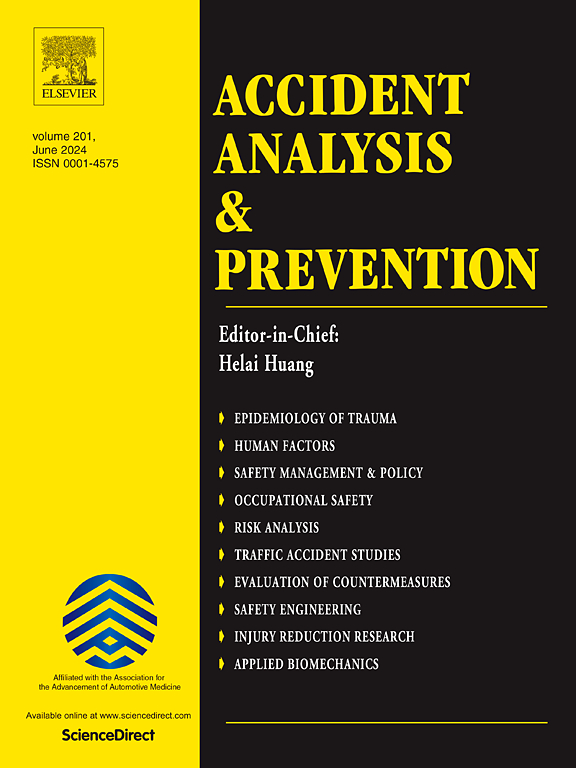Group cycling in urban environments: Analyzing visual attention and riding performance for enhanced road safety
IF 5.7
1区 工程技术
Q1 ERGONOMICS
引用次数: 0
Abstract
China is a major cycling nation with nearly 400 million bicycles, significantly alleviating urban traffic congestion. However, safety concerns are prominent, with approximately 35% of cyclists forming groups with family, friends, or colleagues, exerting a significant impact on the traffic system. This study focuses on group cycling, employing urban cycling experiments, GPS trajectory tracking, and eye-tracking to analyze the visual search, and cycling control of both groups and individuals. Findings reveal that group cyclists tend to focus more on companions, leading to a dispersed gaze pattern compared to individual riders who focus more on the direct path and surroundings. Group riders also exhibit shorter fixation times on traffic signs, potentially indicating decreased attention to traffic regulations. Despite similar lateral position deviation, group cyclists exhibit higher steering entropy, indicating greater variability in their steering choices. Additionally, group riders demonstrate varied passing times, suggesting a collective advantage in navigating complex traffic conditions. This study enhances our understanding of bicycles within traffic dynamics, offering valuable insights for traffic management systems.
城市环境中的集体骑行:分析视觉注意力和骑行表现,提高道路安全。
中国是自行车大国,拥有近 4 亿辆自行车,大大缓解了城市交通拥堵问题。然而,安全问题十分突出,约 35% 的骑车人与家人、朋友或同事结成群体,对交通系统产生了重大影响。本研究以群体骑行为重点,通过城市骑行实验、全球定位系统轨迹跟踪和眼动跟踪,分析群体和个人的视觉搜索和骑行控制。研究结果表明,与个人骑行者相比,群体骑行者往往更关注同伴,从而导致分散的注视模式,而个人骑行者则更关注直接路径和周围环境。集体骑行者对交通标志的固定时间也较短,这可能表明他们对交通规则的关注度有所下降。尽管横向位置偏差相似,但集体骑车者表现出更高的转向熵,这表明他们的转向选择具有更大的可变性。此外,群体骑行者的通过时间也不尽相同,这表明他们在驾驭复杂交通状况时具有集体优势。这项研究加深了我们对交通动态中自行车的理解,为交通管理系统提供了宝贵的见解。
本文章由计算机程序翻译,如有差异,请以英文原文为准。
求助全文
约1分钟内获得全文
求助全文
来源期刊

Accident; analysis and prevention
Multiple-
CiteScore
11.90
自引率
16.90%
发文量
264
审稿时长
48 days
期刊介绍:
Accident Analysis & Prevention provides wide coverage of the general areas relating to accidental injury and damage, including the pre-injury and immediate post-injury phases. Published papers deal with medical, legal, economic, educational, behavioral, theoretical or empirical aspects of transportation accidents, as well as with accidents at other sites. Selected topics within the scope of the Journal may include: studies of human, environmental and vehicular factors influencing the occurrence, type and severity of accidents and injury; the design, implementation and evaluation of countermeasures; biomechanics of impact and human tolerance limits to injury; modelling and statistical analysis of accident data; policy, planning and decision-making in safety.
 求助内容:
求助内容: 应助结果提醒方式:
应助结果提醒方式:


